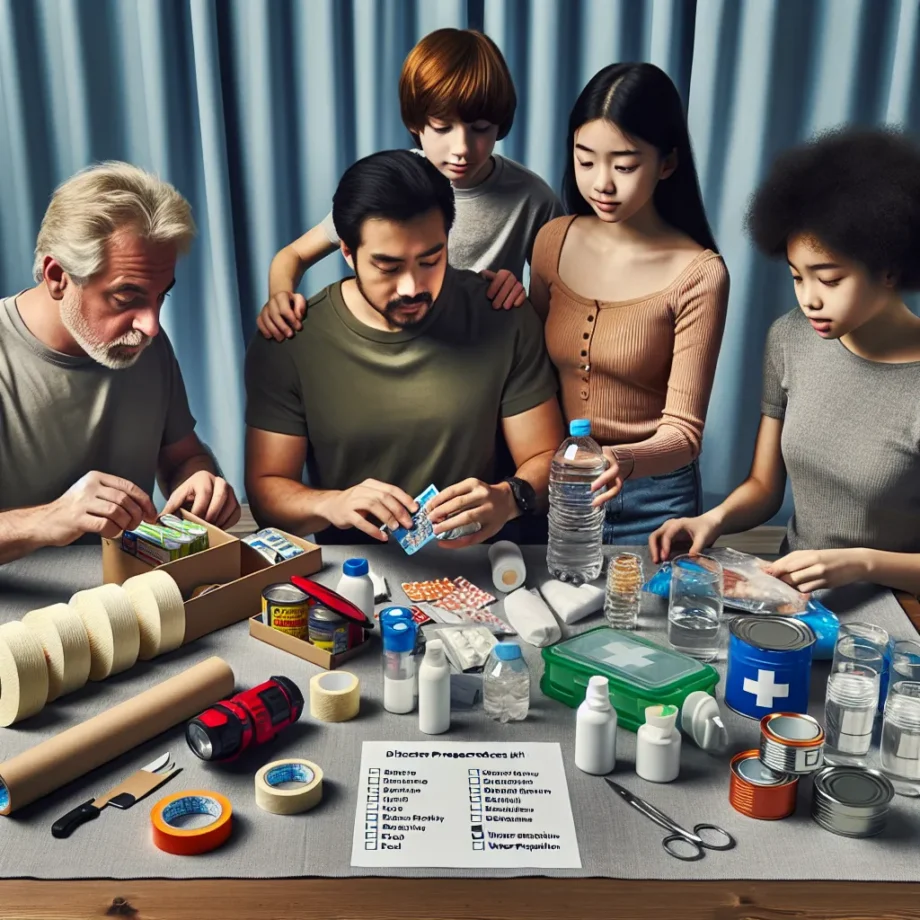Creating an Emergency Preparedness Kit for Your Home
Creating an Emergency Preparedness Kit for Your Home
Creating an emergency preparedness kit for your home is essential in ensuring that you and your family are ready to face any disaster. Whether it’s a natural disaster or a man-made emergency, having a well-stocked kit can make a significant difference in ensuring your safety and well-being during a crisis. Here are some essential items to include in your emergency preparedness kit:
1. Water and non-perishable food: It’s crucial to have an ample supply of water (at least one gallon per person per day) and non-perishable food items such as canned goods, energy bars, and dried fruits. Make sure to regularly check and replace these items to keep them fresh.
2. First aid kit: A well-stocked first aid kit is vital for addressing minor injuries and providing initial care during emergencies. It should include bandages, antiseptic wipes, pain relievers, and essential medications.
3. Flashlights and batteries: In the event of a power outage, having reliable flashlights and extra batteries is essential for providing illumination and maintaining a sense of normalcy during dark times.
4. Emergency radio: A battery-powered or hand-crank emergency radio can provide access to important information and updates during a crisis, especially when other communication channels are disrupted.
5. Personal hygiene and sanitation items: Include essential personal hygiene items such as wet wipes, hand sanitizer, and basic toiletries. Additionally, don’t forget to include garbage bags and plastic ties for waste disposal.
6. Important documents and cash: Keep copies of important documents like identification, insurance policies, and emergency contact information in a waterproof container. Also, include some cash in small denominations as ATMs and card payments may not be accessible during emergencies.
7. Multi-tool and duct tape: A multi-tool can come in handy for various tasks, while duct tape is useful for temporary repairs and improvisations.
It’s important to customize your emergency preparedness kit based on your family’s specific needs, including any special requirements for infants, elderly family members, or pets. Store your kit in a readily accessible location, and ensure that everyone in the household knows where it is located. Regularly review and update the contents of your emergency preparedness kit to account for changing needs and to replace expired items.
By taking the time to assemble and maintain an emergency preparedness kit, you are taking proactive steps to protect yourself and your loved ones in the face of unexpected disasters. It’s an investment in safety and peace of mind that can make a crucial difference when it matters most.
Establishing a Family Disaster Plan: Key Steps for Safety
Establishing a family disaster plan is crucial for ensuring the safety and well-being of your loved ones in the event of an emergency. The key to an effective plan is thorough preparation and clear communication. Begin by identifying potential risks in your area, such as natural disasters or local hazards, and discuss them with your family. Create a detailed evacuation plan with designated meeting points and escape routes, and ensure that every family member understands their role and responsibilities.
Assemble an emergency kit with essential supplies, including water, non-perishable food, first-aid items, and important documents. Regularly review and update your family disaster plan to account for any changes in circumstances or new information. Conduct practice drills to familiarize everyone with the plan and ensure that it can be executed swiftly and efficiently when needed. By taking these proactive measures, you can help safeguard your family during unexpected and challenging situations.
Securing Your Home: Preventative Measures for Natural Disasters
Securing Your Home: Preventative Measures for Natural Disasters
Securing your home is crucial for ensuring the safety of your household during natural disasters. Start by conducting a thorough assessment of your property to identify potential risks and weak points. One key preventative measure is to secure heavy furniture and appliances to prevent them from toppling over during earthquakes or strong winds. Additionally, consider reinforcing your home’s structure by retrofitting it to withstand earthquakes, hurricanes, or floods. This may involve installing hurricane straps, reinforcing the foundation, or adding shutters to protect windows.
Another essential step is to create an emergency kit and develop a family communication plan. Your emergency kit should include non-perishable food, water, first aid supplies, flashlights, and batteries. It’s also important to secure important documents such as insurance policies, identification, and medical records in a waterproof and fireproof container. Furthermore, staying informed about potential disasters and evacuation routes is crucial for preparedness. Consider investing in a weather radio and subscribing to emergency alerts for your area.
In addition to physical preparations, it’s important to review your insurance coverage to ensure it adequately protects your home and belongings in the event of a natural disaster. Consider obtaining flood insurance if you live in a flood-prone area, and verify that your policy covers the full cost of rebuilding your home. Keep an updated home inventory and document your possessions through photographs or videos to streamline the insurance claims process in case of damage or loss.
By taking proactive measures to secure your home and prepare for potential disasters, you can help safeguard your family and minimize the impact of unforeseen events. Stay vigilant, stay informed, and stay prepared.
